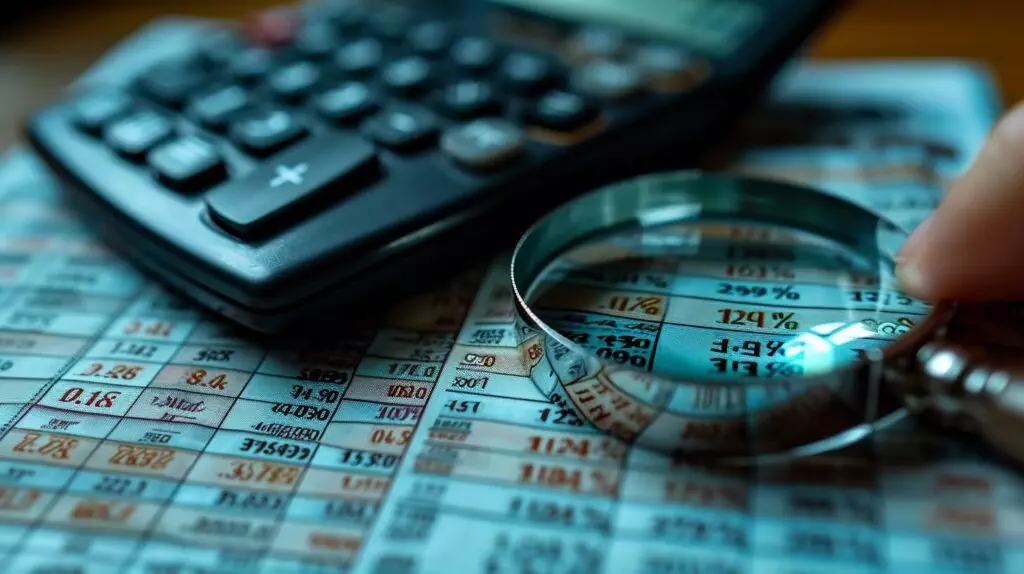The term ‘pip’, which stands for either percentage in point or price, is extraordinarily significant in Forex trading. Even though it concerns the final decimal place, this pip fundamentally underpins Forex trading operations. It’s crucial for not just determining our gains and losses, but it also demonstrates our effectiveness as Forex traders.
In our Pip Meaning Forex guide, we will unravel the concept of a ‘pip’, its calculation, and its application, revealing a world of trading opportunity that awaits.
Key Takeaways
- 1 pip is the smallest unit of change in a forex currency pair’s exchange rate in the forex market.
- Calculating profits and losses in forex trading, which can be expressed in pips, shows the crucial role of pips.
- The value of a pip depends on the currency pair, trade size, and market price.
- Pips are used to determine profit and loss in trades and set stop-loss and take-profit levels.
Understanding the Concept of Pips in Forex Trading

Before we delve into the complexities of forex trading, it’s crucial to grasp the concept of a ‘pip’, a fundamental measure used to track price movements in currency pairs. The term ‘pip’ stands for ‘percentage in point’ or ‘price interest point’, and it’s the smallest unit of change in a currency pair’s exchange rate in the forex market.
In most cases, a pip refers to the fourth decimal place of an exchange rate, but if the currency pair involves the Japanese Yen, it’s usually the second decimal place. To put it simply, if the exchange rate for a currency pair moves from 1.3000 to 1.3001, that’s a one pip increase.
Understanding the value of one pip is essential in forex trading. It helps us measure our profits and losses. For instance, suppose when trading a standard lot of 100,000 units in a currency pair, the value of one pip in your quote currency is $10. If the price moves in our favor by 10 pips, we’d make a profit of $100 (10 pips x $10/pip). Conversely, if the price moves against us by 10 pips, we’d incur a loss of $100.
Calculating the Value of a Pip in Forex Trading

Calculating the value of a pip in forex trading is a key skill that can significantly enhance our trading strategies. Understanding the value of a single pip is crucial because it influences the amount of risk you’re willing to take and the profit you hope to make.
Foremost, we should note that 1 pip is the smallest whole unit of measurement used in forex currency pairs. Typically, it’s the fourth decimal place in most currency pairs, or the second decimal place when JPY is in the pair.
To calculate the pip value, you need to understand that its value—down to the last decimal—relies on the specific currency pair you’re trading, the size of trades in your trading account, and the current market price. Here’s a useful formula: Pip Value = (One Pip / Exchange Rate) * Lot Size.
Let’s break it down:
Term Definition: A pip change is the smallest change in value between two currencies.
- One Pip: The smallest change in the exchange rate
- Exchange Rate: The value of one currency expressed in terms of another
- Pip Meaning Forex: The number of currency units you’re trading
Using Pips to Determine Profit and Loss in Forex Trades

Having understood how to calculate the value of a pip in forex trading, let’s explore how using pips to determine profit and loss in forex trades can be a crucial part of your forex trading strategies. The value of a pip depends on many factors including the currency pair you’re trading and the size of your trade.
Assume you enter a long trade on EUR/USD at 1.2000 and close the trade at 1.2050; this transaction amounts to a profit of 10 pips or fifty pips in your quote currency, contributing to the results in a pip value. This represents a 50 pip increase. If you’re trading 1 lot with your forex account, and the value of a pip is $10, your profit would be $500, indicating how crucial pips represent in trading. Similarly, if the trade went against you and closed at 1.1950, this would represent a 50 pip decrease, leading to a loss of $500.
Pips also play a key role in setting stop-loss and take-profit levels. A stop-loss order is a defensive mechanism you can use to protect against further losses. For instance, you can set a stop-loss order 20 pips below your entry point which, expressed in pips, would be registered in your trading account; this means the trade will automatically be closed if the price drops by 20 basis points or 3 pips.
The Difference Between a Pip and Pipette in Forex Trading

Diving into the nuances of forex trading, it’s essential to understand the difference between a pip and a pipette, as pipettes offer a more precise price quoting for certain currency pairs. In the forex market, a pip is a unit of measure used to express the change in value between two currencies. When you engage in a currency trade, the change in the price of the base currency is measured in pips.
However, with the rise of online forex trading, brokers began offering fractional pip pricing, hence the introduction of pipettes. A pipette, then, is a fractional pip, typically one-tenth of a pip. Pips represent an extra decimal place of precision in quoting forex pairs, highlighting the subtle nuances in the exchange rates. This increased precision can be particularly useful for tighter spreads and can potentially allow you to profit from smaller price movements in the forex market.
How can understanding the meaning of “Sell to Close” in options trading help me master the essentials of forex trading?
Understanding the meaning of “Sell to Close” in options trading is essential for mastering the decision making in options trading. This term refers to selling an options contract that you previously bought. Mastering this concept is crucial for success in forex trading and making informed trading decisions.
Tips for Understanding and Utilizing Pips as a Forex Trader

With a firm grasp of the difference between pips and pipettes, let’s explore how to effectively use pips in forex trading, a crucial skill for managing risk, sizing positions, and assessing potential profits. The pip meaning in forex is essentially the smallest change in value between two currencies. Understanding and learning about pips effectively is key to mastering the essentials used in forex trading.
To aid in your journey as a forex trader and to effectively manage your forex account, here are three tips which include many aspects of pips.
- Always consider the value of 1 pip in your trading currency used in forex. The pip value can significantly impact your profits or losses.
- Use pips to calculate the risk and reward ratio. Modifying your trading risk effectively is possible by using the standard lot size principle.
- Remember, not all currency pairs have the same pip value. Before entering any trade, it’s important to grasp the unit change aspect of pips and your quote currency.
Getting a handle on pips can drastically improve your forex trading strategy. For instance, knowing the pip value of your preferred currency pair can help you size your position correctly. This ensures your trading account is managed appropriately by never risking more than you’re willing to lose, a strategy hinged on understanding pips, down to the last decimal.
Conclusion
As we’ve seen, understanding pips is essential for successful forex trading. They help us calculate our potential profit and loss, and differentiate between pip and pipette.
By mastering the concept of pips, we can make informed decisions, manage our risks better, and ultimately, increase our chances of success in the forex market.
So, keep these tips in mind and make many pips work for you in your forex trading journey.
Frequently Asked Questions
What is a pip in forex trading?
A pip, or percentage in point or price, is a unit used to measure the change in value between two currencies in the foreign exchange market and is critical in understanding one pip movement in forex trading. Representing the smallest price change that a given exchange rate can make, a pip is usually determined up to two decimal places.
How is pip value calculated?
The value of a pip is calculated by multiplying the size of a pip (0.0001 for most currency pairs) by the trade value. This determines the monetary value of each pip movement for a particular trade.
Why are pips important in forex trading?
Pips are important as they help traders understand the price movement of currency pairs and calculate potential profits or losses. They are also used to express the spread in the common forex market and represent the smallest price change for a given currency pair, making even 2 pips highly significant.
What is a pipette and how does it relate to pips?
A pipette is a fractional value of a pip, commonly used when price movements are smaller than one pip. In the common forex jargon, it is equivalent to a tenth of a pip, allowing for more precise measurement and analysis of currency price movements.
How are pips expressed in forex trading?
Pips are commonly expressed in the fifth decimal place for most currency pairs. This additional decimal point allows for more accurate pricing and reflects even the smallest change in the exchange rate of a currency pair.



